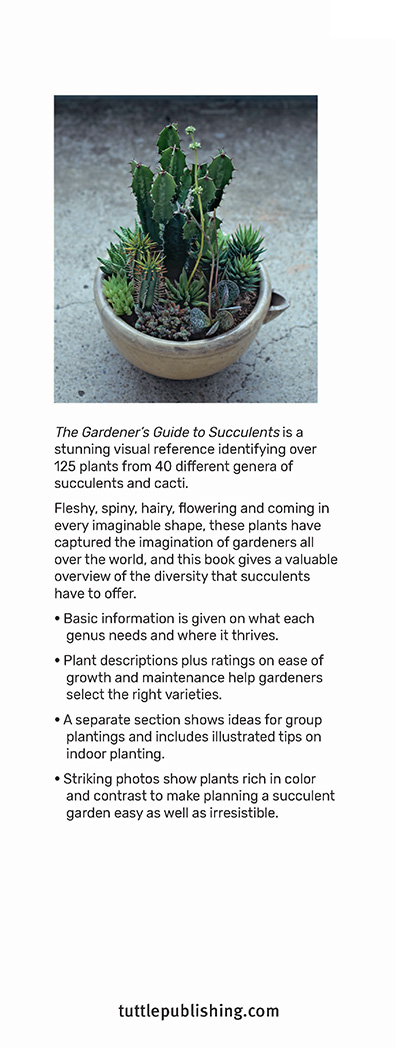 The Gardeners Guide to SUCCULENTS A Handbook of Over 125 Exquisite Varieties of Succulents and Cacti
The Gardeners Guide to SUCCULENTS A Handbook of Over 125 Exquisite Varieties of Succulents and Cacti 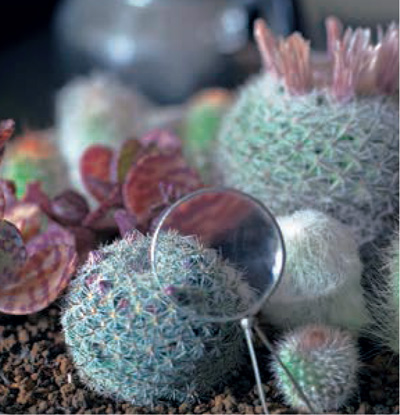 Misa Matsuyama
Misa Matsuyama  Introduction Succulent plants originated in areas that receive extremely low rainfall. Because of this, they evolved in a way that would enable them to accumulate water inside their bodies. The shapes born from such strength are beautiful and strange. Unlike other plants, their leaves have very delicate color gradients. The leaves also change color during fall and are truly a wonderful sight. I hope that with the help of this illustrated book, youll enjoy discovering these wonderful plants and become acquainted with their details almost as if you were observing them through a magnifying glass.
Introduction Succulent plants originated in areas that receive extremely low rainfall. Because of this, they evolved in a way that would enable them to accumulate water inside their bodies. The shapes born from such strength are beautiful and strange. Unlike other plants, their leaves have very delicate color gradients. The leaves also change color during fall and are truly a wonderful sight. I hope that with the help of this illustrated book, youll enjoy discovering these wonderful plants and become acquainted with their details almost as if you were observing them through a magnifying glass.
I think the best way to appreciate the beauty of succulent plants is by looking up close, and learning as much as you can about their origins and characteristics. There are many types of succulents, and its fun to collect them. Most of the species I introduce in this book are among the more accessible types, and should be fairly easy to come by. I hope this book will entice you to give succulents a try, and maybe set you on the road to a new passion. Misa Matsuyama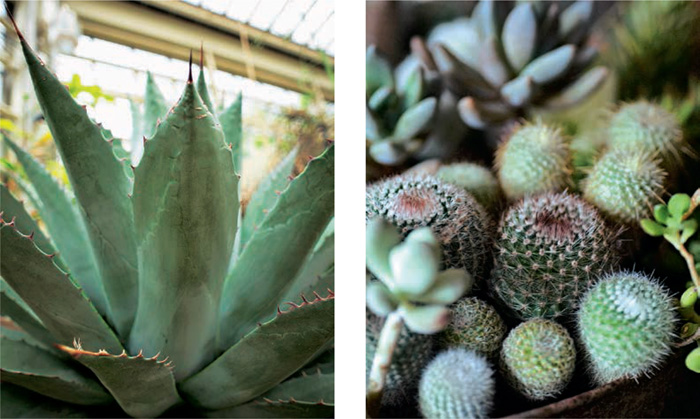 PART 1 The Varieties of Succulent Plants In this section, I will introduce the species main characteristicshow they look, how they grow, and other aspectsin order to give you a sense of their infinite variety. For example, Sedum plants have plump leaves filled entirely with water, while Haworthia and others have a lens that gleams and which, if seen from the right angle, is truly beautiful.
PART 1 The Varieties of Succulent Plants In this section, I will introduce the species main characteristicshow they look, how they grow, and other aspectsin order to give you a sense of their infinite variety. For example, Sedum plants have plump leaves filled entirely with water, while Haworthia and others have a lens that gleams and which, if seen from the right angle, is truly beautiful.
And the Lithops have a skin that they shed. The world of succulents is vast, mysterious and fascinating. This is the world I hope to share with you. I hope you enjoy the adventure. 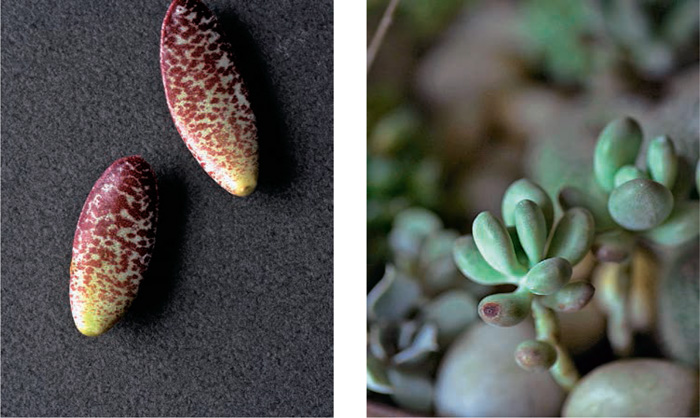
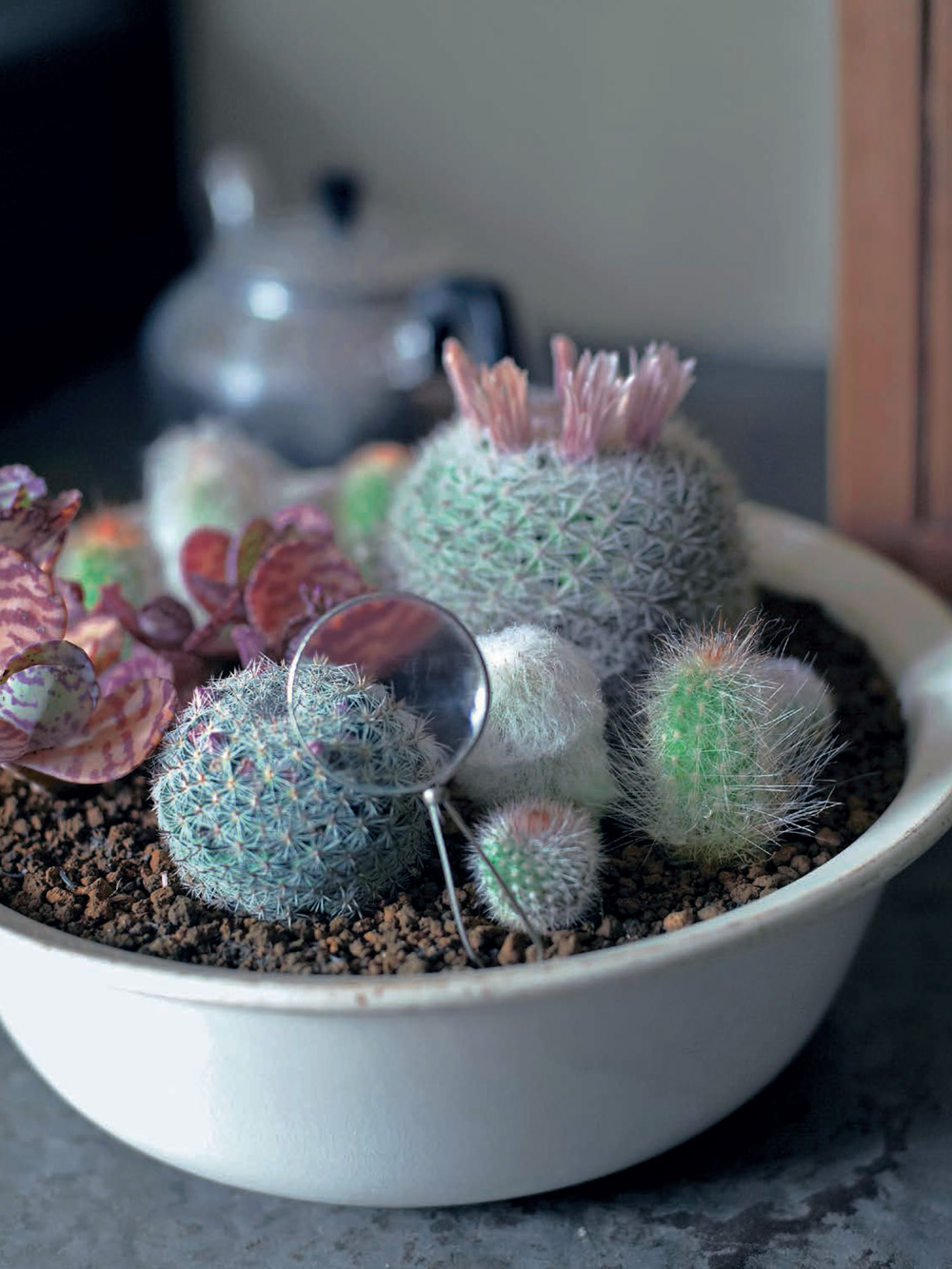 Plump leaves In order to protect themselves from dehydration, succulents have thick and plump leaves that are full of water.
Plump leaves In order to protect themselves from dehydration, succulents have thick and plump leaves that are full of water.
Sedum (Stonecrops/Crassulaceae Family) Characteristics :
Sedum are so named because of the way they spread or creep low to the ground, growing in clumps or clusters.
Sedum (Stonecrops/Crassulaceae Family) Characteristics :
Sedum are so named because of the way they spread or creep low to the ground, growing in clumps or clusters.
They are popular for rooftop greening, rock gardens, and other places where soil may be shallow. The leaves come in many colors and shapes as well. Cultivation : Sedum grow fast. They can be kept neat by regular trimming. It is important to keep them in a sunny area, as they really love sunlight. Being strong to cold weather, they can be grown outdoors all year round.
If grown indoors, they might not receive enough sunlight, making them more difficult to sustain and grow cleanly. Area of origin : Tropic, subtropic, temperate areas 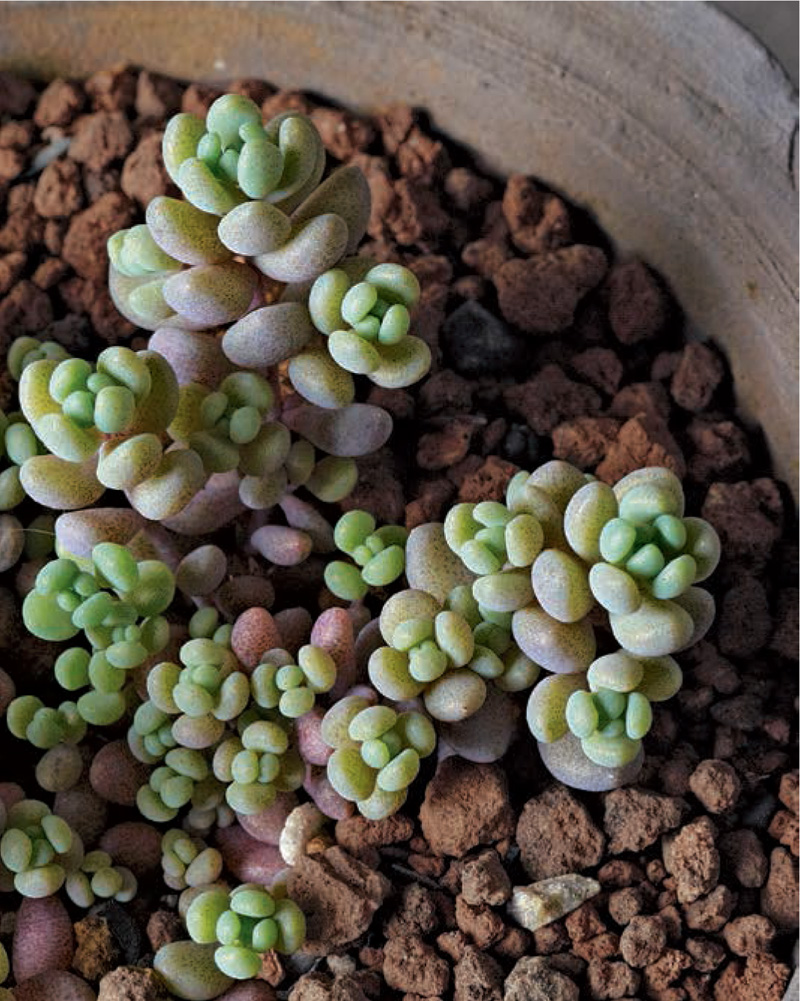 Ventilation
Ventilation  Light shortage
Light shortage  Growth rate
Growth rate  Sedum dasyphyllum (Corsican stonecrop) This variety is made of small clumps of blue, fuzzy leaves. Its flowers are charming white florets. It can grow into a beautiful carpet or cascade. Be sure to ensure good ventilation, as this plant can rot easily in the summer months. In the fall the leaves change to a beautiful purple.
Sedum dasyphyllum (Corsican stonecrop) This variety is made of small clumps of blue, fuzzy leaves. Its flowers are charming white florets. It can grow into a beautiful carpet or cascade. Be sure to ensure good ventilation, as this plant can rot easily in the summer months. In the fall the leaves change to a beautiful purple.
It is easy to breed and it can easily grow outside of summer. Sedum hernandezii Ventilation  Light shortage
Light shortage  Growth rate
Growth rate  The leaves are deep green in color, with brown, fuzzy stems. Its growth is very slow. Since it easily gets sunburned, avoid strong sunlight in midsummer.
The leaves are deep green in color, with brown, fuzzy stems. Its growth is very slow. Since it easily gets sunburned, avoid strong sunlight in midsummer. 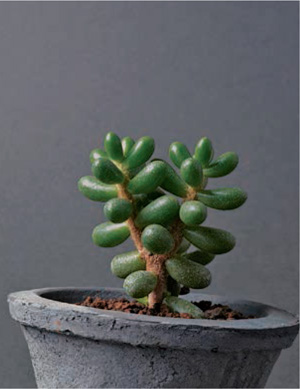 Sedum hernandezii
Sedum hernandezii
Sedum spathulifolium (Broadleaf stonecrop) Ventilation

Light shortage

Growth rate

Stems and leaves are covered in a white powder. It grows small, pretty rose-shaped leaf clusters.
Its extremely weak to rotting during summer and requires care. As the plant ages, the distance between the leaves also increases. 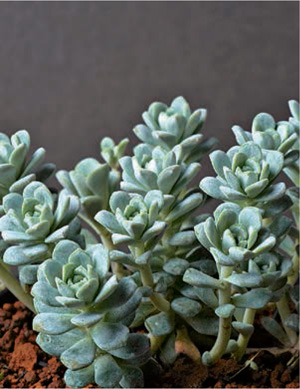 Sedum pachyphyllumSedum pachyphyllum Ventilation
Sedum pachyphyllumSedum pachyphyllum Ventilation  Light shortage
Light shortage  Growth rate
Growth rate  Called Maidens heart (or also Maidens mind or Maidens feelings) in Japanese because the tip of the leaves blush during the fall. Its prone to rotting during summer, so make sure its placed in a very ventilated spot.
Called Maidens heart (or also Maidens mind or Maidens feelings) in Japanese because the tip of the leaves blush during the fall. Its prone to rotting during summer, so make sure its placed in a very ventilated spot. 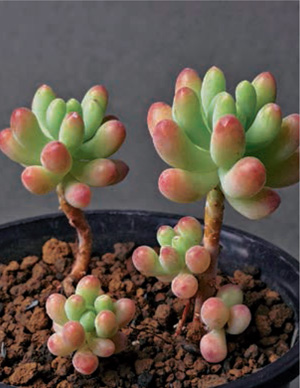 Sedum spathulifoliumSedum Rotty Ventilation
Sedum spathulifoliumSedum Rotty Ventilation  Light shortage
Light shortage  Growth rate
Growth rate  This is a hybrid species, popular for its flowers. In the fall, only the edges turn red.
This is a hybrid species, popular for its flowers. In the fall, only the edges turn red.
The lower leaves wither and fall, growing back like pup plants. 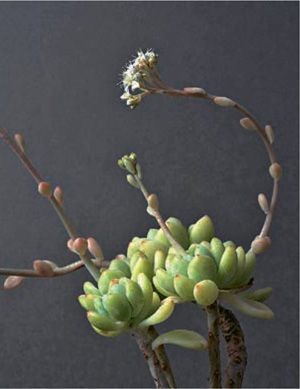 Sedum RottySedum rubrotinctum f. variegata Ventilation
Sedum RottySedum rubrotinctum f. variegata Ventilation 
Next page
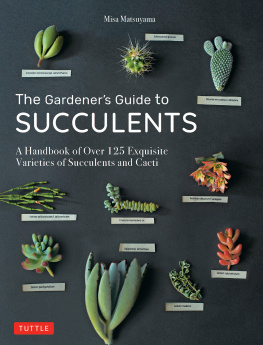
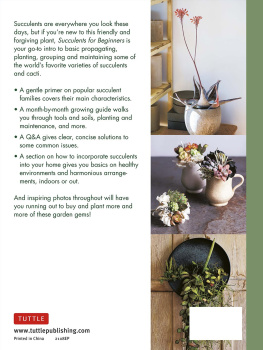

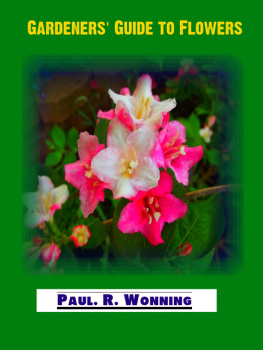
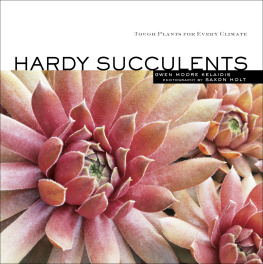
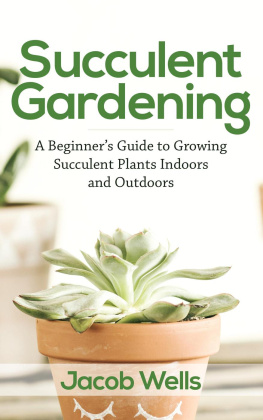
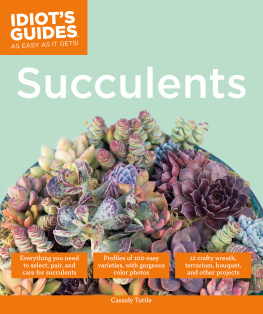
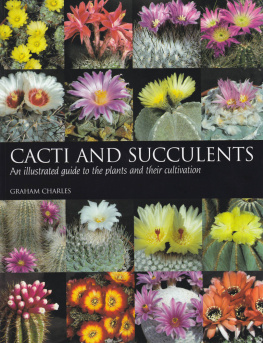
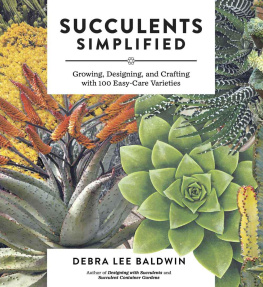
 The Gardeners Guide to SUCCULENTS A Handbook of Over 125 Exquisite Varieties of Succulents and Cacti
The Gardeners Guide to SUCCULENTS A Handbook of Over 125 Exquisite Varieties of Succulents and Cacti  Misa Matsuyama
Misa Matsuyama  Introduction Succulent plants originated in areas that receive extremely low rainfall. Because of this, they evolved in a way that would enable them to accumulate water inside their bodies. The shapes born from such strength are beautiful and strange. Unlike other plants, their leaves have very delicate color gradients. The leaves also change color during fall and are truly a wonderful sight. I hope that with the help of this illustrated book, youll enjoy discovering these wonderful plants and become acquainted with their details almost as if you were observing them through a magnifying glass.
Introduction Succulent plants originated in areas that receive extremely low rainfall. Because of this, they evolved in a way that would enable them to accumulate water inside their bodies. The shapes born from such strength are beautiful and strange. Unlike other plants, their leaves have very delicate color gradients. The leaves also change color during fall and are truly a wonderful sight. I hope that with the help of this illustrated book, youll enjoy discovering these wonderful plants and become acquainted with their details almost as if you were observing them through a magnifying glass. PART 1 The Varieties of Succulent Plants In this section, I will introduce the species main characteristicshow they look, how they grow, and other aspectsin order to give you a sense of their infinite variety. For example, Sedum plants have plump leaves filled entirely with water, while Haworthia and others have a lens that gleams and which, if seen from the right angle, is truly beautiful.
PART 1 The Varieties of Succulent Plants In this section, I will introduce the species main characteristicshow they look, how they grow, and other aspectsin order to give you a sense of their infinite variety. For example, Sedum plants have plump leaves filled entirely with water, while Haworthia and others have a lens that gleams and which, if seen from the right angle, is truly beautiful.
 Plump leaves In order to protect themselves from dehydration, succulents have thick and plump leaves that are full of water.
Plump leaves In order to protect themselves from dehydration, succulents have thick and plump leaves that are full of water. Ventilation
Ventilation  Light shortage
Light shortage  Sedum dasyphyllum (Corsican stonecrop) This variety is made of small clumps of blue, fuzzy leaves. Its flowers are charming white florets. It can grow into a beautiful carpet or cascade. Be sure to ensure good ventilation, as this plant can rot easily in the summer months. In the fall the leaves change to a beautiful purple.
Sedum dasyphyllum (Corsican stonecrop) This variety is made of small clumps of blue, fuzzy leaves. Its flowers are charming white florets. It can grow into a beautiful carpet or cascade. Be sure to ensure good ventilation, as this plant can rot easily in the summer months. In the fall the leaves change to a beautiful purple. The leaves are deep green in color, with brown, fuzzy stems. Its growth is very slow. Since it easily gets sunburned, avoid strong sunlight in midsummer.
The leaves are deep green in color, with brown, fuzzy stems. Its growth is very slow. Since it easily gets sunburned, avoid strong sunlight in midsummer.  Sedum hernandezii
Sedum hernandezii Sedum pachyphyllumSedum pachyphyllum Ventilation
Sedum pachyphyllumSedum pachyphyllum Ventilation  Sedum spathulifoliumSedum Rotty Ventilation
Sedum spathulifoliumSedum Rotty Ventilation  Sedum RottySedum rubrotinctum f. variegata Ventilation
Sedum RottySedum rubrotinctum f. variegata Ventilation